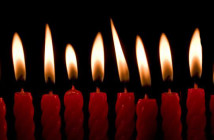WHERE CAN I FIND SOME NEW ART?
I'm staring at a blank screen, trying to figure out what to write. I want to write that Boston's alternative scene is non-existant and that young artists have no place to gain experience, galleries have no place to find risky new work, and established artists have no place to try new ideas. Yet, were I to do so, I would have to confront the much larger issue that, as much as these spaces might be necessary for artists and that Boston cannot become a cultural leader without them, there is simply no financial or community incentive to make them happen.
Boston's alternative gallery scene is currently non-existent. This is not to say that there aren't some truly heroic spaces making a valiant effort in the face of daunting odds. Yet, compared to a decade ago, or other cities in our present era, Boston offers the emerging artist no real opportunities to build a career outside the commercial galleries and schools. This is sad for a number of reasons, but there are three that I find most important as I look at my current class of seniors and wonder where they will find themselves over the next few years.
The most important thing for any artist, and young artists especially, is the opportunity to showcase one's talents and create an audience for the work. Alternative spaces encourage risk-taking and innovative art, and foster audiences who promote the art on view. For young artists looking to build a base of fans and/or collectors, this is the first step toward commercial success. For established artists, proving that their work can grow and remain on the edges of discourse is equally important, and often occurs within spaces that do not depend on sales for solvency.
If there were an obvious answer to Boston's lack of alternative spaces, I would have written a piece outlining how to solve the problem. Unfortunately, there is no clear answer, and we are left with a glaring need but no definitive solutions. In the 1990s, when I first became involved in the Boston art scene, there were a number of inexpensive spaces in Chinatown and Fort Point. Now, both of those neighborhoods are overly gentrified and less and less affordable for artists. Jamaica Plain and Mission Hill are also receding in terms of affordability, and even outlying neighborhoods are becoming overpriced. There are no longer any underdeveloped neighborhoods in Boston for artists to commandeer, and make new alternative spaces, like there were a decade ago.
What is to be done? I'm not sure. The spaces I remember fondly from the 1990s were created by artists in their youth, just out of school and anxious to make their mark. I'm sure those artists exist today, even if the market does not favor their endeavors. Still, I know how much Boston's art community craves new work, new spaces and exciting art, so if anyone were to open a new space there would be a lot of happy people. We need new and risky art, and I (for one) will travel to see it. Roslindale? Ok. Milton? Hyde Park? Dorchester? Sure. As Boston becomes unaffordable for artists, these will likely be the new neighborhoods to see art, similar to NYC's shift to Brooklyn in the last decade. Even so, who will create these spaces and promote new art? Will you let me know, I really REALLY want to be there...
- Mobius, in Boston’s South End, one of Boston’s longest-running alternative spaces
Image courtesy of the Mobius website.




